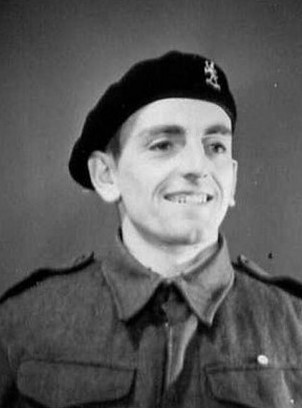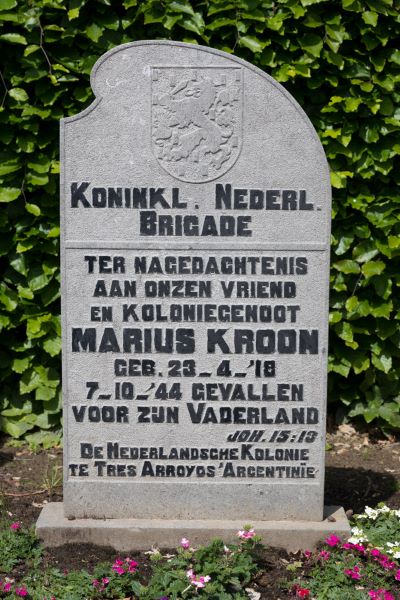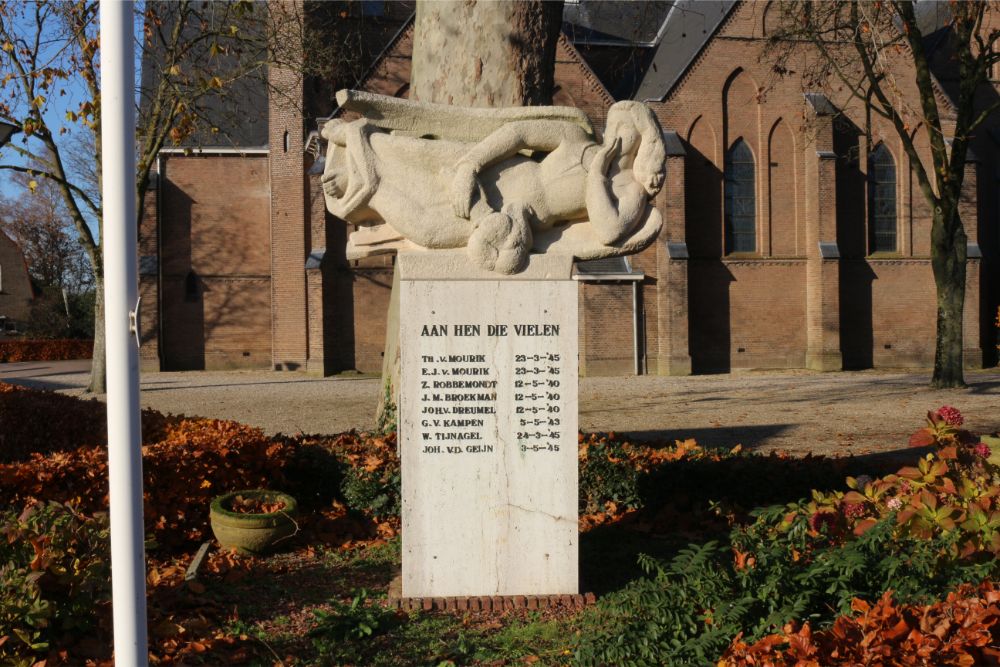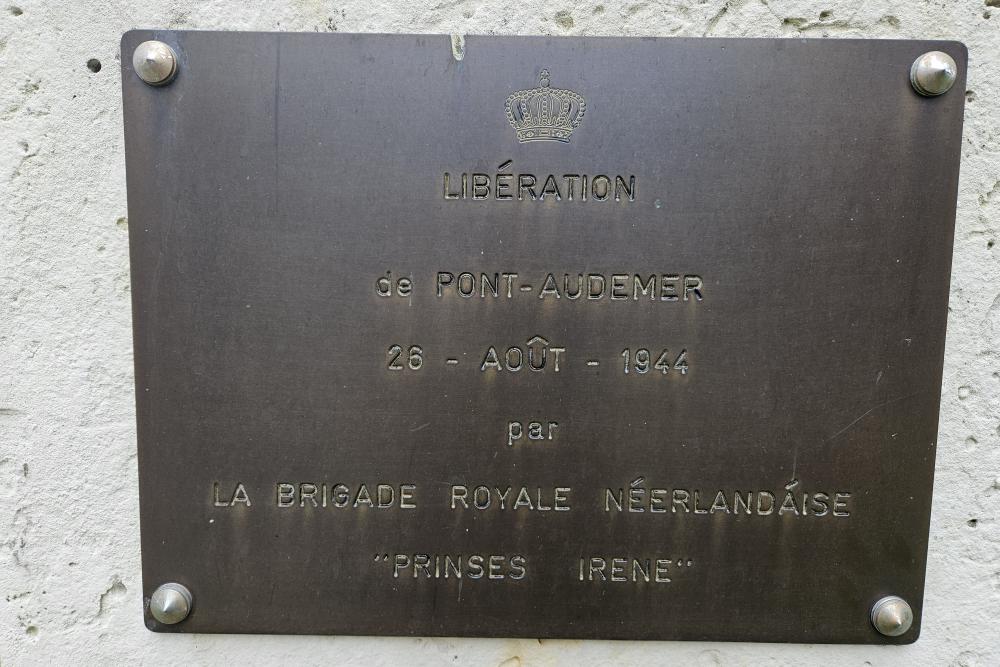Kroon, Marius
- Date of birth:
- April 23rd, 1918
- Date of death:
- October 7th, 1944
- Buried on:
- Dutch War Graves Protestant Cemetery Horssen
- Nationality:
- Dutch
Biography
Marius Kroon was born on April 23, 1918, in Haarlemmermeer, the Netherlands. He was the fifth of nine children of Maurits Cornelis Kroon and Willemina Catharina Honcoop. His father was smith by trade. In his youth Marius hung out often with his elder brother Jaap. After basic school Marius went to live with an uncle and aunt in Plaspolder, who didn’t have kids. Marius worked a while at a farm near his hometown, however, farming had little prospects at that time. During the crisis years he worked as a courier for a company in Rotterdam. During that time frame he came in contact with family Verkuyl whose sons Peter and Jan had migrated to Argentine in an attempt to set up a farming live there. Living there was hard and lonely and they hoped to convince more Dutchmen to migrate and set up a Netherlands colony there. Marius was persuaded when he was 19 years old, and in 1937, he travelled, via Buenos Aires, to Tres Arroyos in Argentine. He was lodged by family members of Peter and Jan and learnt horseback riding as a way for moving around. Although it sounds as a beautiful story, it really wasn’t. Life was very tough. After a few months Marius was employed by a Danish farmer. Association was hard, because the Danes were surly and the language barrier prevented conversation.
When in May 1940 the government had evaded to London, it called on all Dutch men abroad, who were between 18 and 36 years of age, to enlist and in that way assist in ending the occupation of the Netherlands. In 1941, Marius travelled to England and joined the Royal Netherlands Brigade ‘Princess Irene’. The soldiers were trained and prepared and then had to wait for the Allied invasion in Normandy. Between exercises and training, Marius and other Dutch soldiers, assisted the farmers in the vicinity of their army base.
Early August, 1944, Marius and his fellows moved to France where, on August 8, they disembarked on the beach of Graye-sur-Mer. A day later the brigade was placed under command of the 6 (UK) Airborne Division to be part of the break-out along the coast to the north, via Ouistreham (near Sword beach). During this break-out, on August 26 the brigade liberated the city of Pont Audemer. From late August onwards, the brigade advanced to Le-Havre and passed the border with Belgium in early September to advance via Brussels, Leuven, Diest to Beringen. Marius, with the recce unit, set up positions near the Beringen-Mijn. Then, the brigade advanced to Houthalen, where it guarded the flank in a southeasterly direction. On September 16, 1944, the brigade was placed under command of the 43 Division and followed the Guards Armoured Division during operation Market Garden. At midnight of 20-21 September, the Royal Netherlands Brigade ‘Princess Irene’ crossed the border near Borkel and Schaft and after seven years Marius again set foot on Dutch soil. That night the bridge at Grave was reached and the brigade was ordered to take over the securing of the bridge.
On September 25, 1944, the recce unit conducted a scouting operation in the ‘land of Maas and Waal’. Then the unit set up an observation post in Druten to spot any movements of German units on the other side of the river Waal, near Ochten and Kesteren. On September 28, 1944, the recce unit had the northern part of the land of Maas and Waal as its area of responsibility. When the Germans had conducted some incursions in September and early October in Dreumel and Wamel, the recce unit was moved to Horssen to conduct patrols from there. Marius’s troop, the carrier troop commanded by Lieutenant Ter Haar, was lodged at the Florastraat 76 in Boven-Leeuwen in the farmstead of the Bull family.
On the night of 6 – 7 October, the Germans again conducted an incursion across the river. Around 23.00 hours two dozen German soldiers with three boats landed at the southern embankment of the Waal in Beneden-Leeuwen. They then started summoning the occupants of the houses along the dike to leave their homes, over a stretch of 2,5 kilometers to the east. The Germans set 43 buildings on fire, mostly houses. Around 02.00 hours private Marius Kroon, with his colleague private Raymond Arnóti, were patrolling the dike near the Florastraat in Boven-Leeuwen, one kilometer further east. They were then ambushed by a German patrol while they were descending at the ramp from the dike to the Florastraat. Both soldiers were killed, allegedly because a hand grenade from one of the Dutch was hit by a bullet and subsequently exploded. The German patrol was probably a security element to identify and eliminate any possible Allied reaction and/or threat to the raiding party that was torching the houses along the dike. The German soldiers escaped through the floodplains to the river Waal and got away by boat.
Marius Kroon, not even three weeks back in the Netherlands, died at 26 years of age, in Boven-Leeuwen. His remains, like those of his fellow soldier Arnóti, were transferred to the command post in Horssen. Both soldiers were then buried at the Protestant Cemetery of the same village.
Do you have more information about this person? Inform us!
Sources
- Photo 1: oorlogsgravenstichting.nl
- Photo 2: Arjan Vrieze
- - aug 1944 - Prinses Irene Brigade
- De landing - Prinses Irene Brigade
- Kroon, M. - Prinses Irene Brigade
- Boven-Leeuwen, oorlogsmonument - Nationaal Comité 4 en 5 mei : Nationaal Comité 4 en 5 mei
- Groot avonturier stierf in Florastraat | Maas en Waal | gelderlander.nl
- Marius Kroon | Oorlogsgravenstichting
- Route Dijkbrand - benedenleeuwenherdenkt.nl
- Overzicht activiteiten in het Land van Maas en Waal - Prinses Irene Brigade
- Twee gesneuvelden in Horssen - Prinses Irene Brigade





